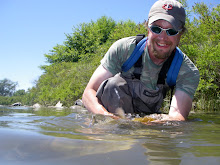Cold Frame
.jpg)
[picture above was just after putting frame out - nothing really bursting forth yet]
.jpg)
[more recent pic of lettuce]
Recipe:
Two treated 2x8s recycled from dismantled deck
One storm window from KLW's pile of extras
Three brass hinges saved from door replacements at previous residence
A good number of wood screws, all found in dumpster
We've had some decent cold spells, frosts and even a couple inches of snow. Despite that, the lettuce and spinach inside the frame are doing very well. A few days after putting it out, I measured at 630 AM an air temp of 39 F, and a temp inside the cold frame of 50 F. By now it doesn't provide that differential, but apparently it's enough cover for cold-tolerant plants to flourish. I've got beets in there too - they look okay but their fate is unclear at this point. Probably pick some lettuce this weekend. Extending the season. Can use the device in spring next year too.
.jpg)
[picture above was just after putting frame out - nothing really bursting forth yet]
.jpg)
[more recent pic of lettuce]
Recipe:
Two treated 2x8s recycled from dismantled deck
One storm window from KLW's pile of extras
Three brass hinges saved from door replacements at previous residence
A good number of wood screws, all found in dumpster
We've had some decent cold spells, frosts and even a couple inches of snow. Despite that, the lettuce and spinach inside the frame are doing very well. A few days after putting it out, I measured at 630 AM an air temp of 39 F, and a temp inside the cold frame of 50 F. By now it doesn't provide that differential, but apparently it's enough cover for cold-tolerant plants to flourish. I've got beets in there too - they look okay but their fate is unclear at this point. Probably pick some lettuce this weekend. Extending the season. Can use the device in spring next year too.
.jpg)
.jpg)
.jpg)
.jpg)
.jpg)
.jpg)
.jpg)
.jpg)
.jpg)
.jpg)
.jpg)
.jpg)
.jpg)
.jpg)
.jpg)
.jpg)
.jpg)
.jpg)
.jpg)
.jpg)

